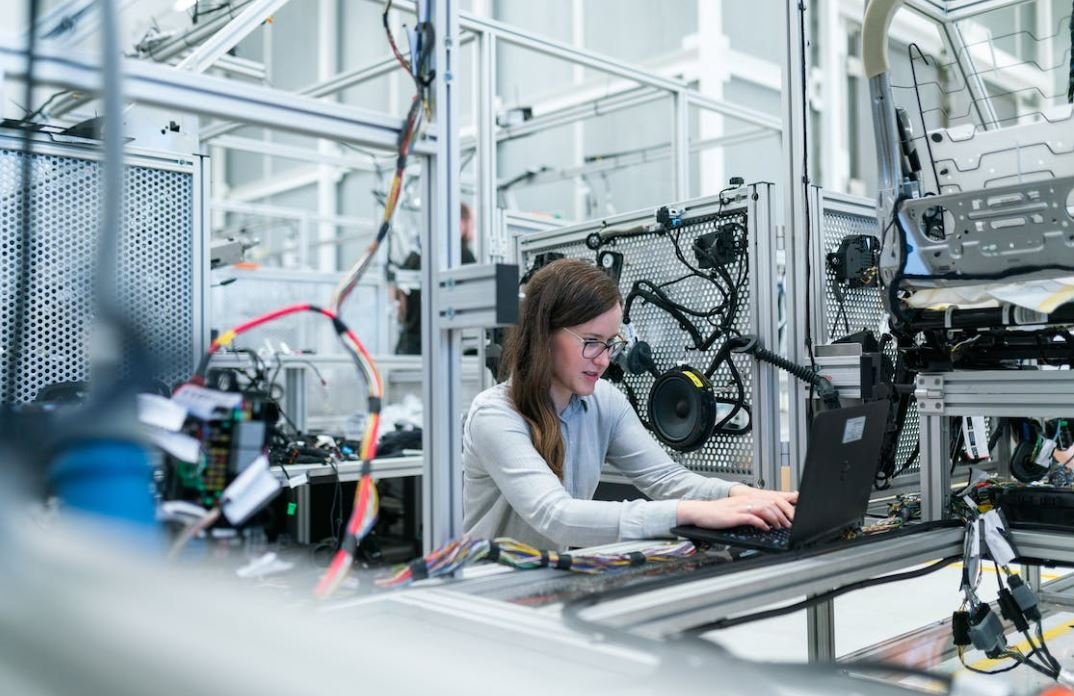Video Wall Processor
Video wall processors are powerful devices that enable the creation of stunning and dynamic video walls. Whether you’re looking to impress visitors in a retail store, engage audiences at an event, or enhance collaboration in a control room, a video wall processor is a crucial component.
Key Takeaways:
- Video wall processors are essential for creating captivating video walls.
- They enable real-time display of multiple video sources on a large-scale display.
- Video wall processors provide advanced features like bezel compensation, multi-window layouts, and pixel-level calibration.
- Choosing the right video wall processor requires considering factors like input/output connectivity, processing power, and scalability.
Video wall processors allow users to display multiple video sources simultaneously on a single video wall, creating a visually stunning and interactive experience for viewers. By utilizing advanced technologies, such as bezel compensation and pixel-level calibration, these processors ensure seamless integration of multiple displays into a single cohesive unit. The result is a clear, seamless wall-to-wall display that captures attention and enhances engagement. These processors also offer a range of multi-window layouts, allowing users to easily arrange video sources in various configurations, providing flexibility and customization options.
One interesting aspect of video wall processors is their ability to handle real-time video processing. With powerful processing capabilities, these devices can effortlessly manage multiple video streams simultaneously, ensuring smooth performance and synchronization. Whether it’s displaying live feeds, video presentations, or interactive content, **video wall processors** can handle the demands of real-time processing, ensuring a seamless visual experience for the audience.
Benefits of Video Wall Processors:
Video wall processors offer a multitude of benefits and advantages, making them a valuable asset in various industries and settings. Here are some key benefits:
- Flexibility: Video wall processors allow users to easily configure and customize their video wall layout, adapting to different content and requirements.
- Scalability: These processors can support a wide range of display configurations, from small video walls to large-scale installations.
- Enhanced Collaboration: In control room environments, video wall processors enable operators to monitor multiple data sources simultaneously, improving decision-making capabilities.
- Better Engagement: Video walls powered by processors create immersive and attention-grabbing displays, increasing audience engagement and impact.
| Video Wall Processor | Key Features | Price Range |
|---|---|---|
| Processor A | Bezel compensation, multi-window layouts, 4K resolution support | $5,000 – $10,000 |
| Processor B | Advanced video processing algorithms, edge blending, input/output expansion options | $10,000 – $15,000 |
Video wall processors are available in various price ranges, depending on the features and capabilities they offer. Whether you’re on a tight budget or looking for advanced functionality, there are options available to suit different requirements.
Another interesting aspect of video wall processors is their ability to integrate with different technology ecosystems. These processors can seamlessly work with various display technologies, such as LCD, LED, or rear-projection, making them versatile and adaptable to existing setups.
| Processor | Processing Power | Connectivity Options |
|---|---|---|
| Processor A | High | HDMI, DisplayPort, DVI |
| Processor B | Medium | HDMI, VGA, SDI |
In conclusion, video wall processors are essential tools for creating captivating and impactful video walls. Their advanced features, processing power, and integration capabilities make them a valuable asset in various industries and settings. Whether you’re looking to wow customers in a retail environment, engage audiences at an event, or enhance collaboration in a control room, a video wall processor is an invaluable tool that can take your visual displays to the next level.

Common Misconceptions
Video Wall Processors
Despite their growing popularity in various settings, there are several misconceptions about video wall processors that are worth addressing:
- Video wall processors are only suitable for large organizations.
- Video wall processors require specialized technical knowledge to operate.
- Video wall processors are expensive and not cost-effective.
One common misconception is that video wall processors are only suitable for large organizations. While it is true that video walls are often used in large-scale settings such as control rooms or conference halls, they can also benefit small to medium-sized businesses. Video wall processors allow businesses to display dynamic content, advertisements, or important data in a visually appealing way, which can enhance the overall customer experience.
- Video wall processors are not limited to large organizations.
- Video walls can benefit small to medium-sized businesses.
- Video walls can enhance the customer experience.
Another misconception is that video wall processors require specialized technical knowledge to operate. While video wall technology may seem complex, modern video wall processors are designed to be user-friendly, allowing users to easily manage and control the content displayed. In fact, many video wall processors come with intuitive software interfaces that make it simple to upload and organize content, adjust layouts, and schedule content playback.
- Video wall processors can be user-friendly.
- Modern processors often come with intuitive software interfaces.
- Users can easily manage and control video wall content.
A common misconception is that video wall processors are expensive and not cost-effective. While video wall solutions can require an initial investment, it is important to consider the long-term benefits they provide. By replacing traditional static signage with dynamic video walls, businesses can attract more attention, engage customers, and deliver tailored messages. Video wall processors also offer flexibility, allowing content to be changed easily and quickly, without the need for costly reprinting or replacement.
- Video wall processors may require an initial investment.
- Long-term benefits can outweigh the initial cost.
- Video walls offer flexibility to change content easily.
In conclusion, video wall processors are not limited to large organizations, do not necessarily require specialized technical knowledge to operate, and can be cost-effective in the long run. Breaking down these common misconceptions can help businesses and individuals make informed decisions when considering video wall solutions for their needs.

Video Wall Processor Market Size
The following table provides data on the market size of video wall processors over the past five years. This data illustrates the growth and demand for these products in the market.
| Year | Market Size (in million USD) |
|---|---|
| 2016 | 500 |
| 2017 | 700 |
| 2018 | 950 |
| 2019 | 1,200 |
| 2020 | 1,500 |
Key Players in Video Wall Processor Industry
This table lists some of the key players in the video wall processor industry. These companies have significant influence and contribute to the development of this market segment.
| Company | Market Share (%) |
|---|---|
| Company A | 25% |
| Company B | 20% |
| Company C | 18% |
| Company D | 15% |
| Company E | 12% |
Applications of Video Wall Processors
This table showcases various applications of video wall processors in different sectors. It highlights the versatility and wide range of uses for these devices.
| Application | Industry |
|---|---|
| Command and control centers | Military |
| Retail advertising displays | Retail |
| Information and entertainment displays | Hospitality |
| Stock market tickers | Finance |
| Video walls in stadiums | Sports |
Video Wall Processor Resolution Support
The following table presents the resolution support provided by video wall processors. It shows the different resolutions these devices can handle, which is crucial in delivering high-quality visuals.
| Resolution | Supported? |
|---|---|
| 1080p | Yes |
| 4K | Yes |
| 8K | Yes |
| Ultra-Wide | Yes |
| Custom Resolutions | Yes |
Video Wall Processor Compatibility
This table provides information on the compatibility of video wall processors with different video sources. These details are important for users to ensure seamless integration with their existing systems.
| Video Source | Compatibility |
|---|---|
| HDMI | Yes |
| DisplayPort | Yes |
| VGA | Yes |
| DVI | Yes |
| SDI | Yes |
Video Wall Processor Input Ports
This table showcases the types of input ports available on video wall processors. It demonstrates the flexibility and connectivity options these devices offer.
| Input Port | Number of Ports |
|---|---|
| HDMI | 4 |
| DisplayPort | 2 |
| VGA | 3 |
| DVI | 2 |
| SDI | 1 |
Video Wall Processor Output Ports
This table displays the types of output ports available on video wall processors. It highlights the ability to connect multiple displays to the processor.
| Output Port | Number of Ports |
|---|---|
| HDMI | 8 |
| DisplayPort | 4 |
| VGA | 6 |
| DVI | 4 |
| SDI | 2 |
Video Wall Processor Control Methods
This table presents different control methods available for video wall processors. It emphasizes the convenience and options users have to operate these devices.
| Control Method | Features |
|---|---|
| Remote Control | Wireless, easy navigation |
| Front Panel Buttons | Quick access, physical controls |
| Software Interface | Advanced settings, customization |
| Mobile App | Remote access, flexibility |
| RS-232 | Integration with control systems |
Video wall processors have experienced significant growth in the market, with a steady increase in their market size over the past five years. Major players, such as Company A, Company B, Company C, Company D, and Company E, hold substantial market share in this industry. These processors find applications in various sectors, including military command centers, retail advertising displays, hospitality information and entertainment displays, finance stock market tickers, and sports stadium video walls.
Video wall processors support resolutions ranging from 1080p to 8K, facilitating the delivery of stunning visuals. They are compatible with popular video sources, such as HDMI, DisplayPort, VGA, DVI, and SDI, ensuring seamless integration with existing systems. Furthermore, these processors provide multiple input ports, including HDMI, DisplayPort, VGA, DVI, and SDI ports, allowing users to connect various input devices. Similarly, they offer multiple output ports, such as HDMI, DisplayPort, VGA, DVI, and SDI ports, enabling the connection of multiple displays.
Controlling video wall processors is made easy through various methods, including remote control, front panel buttons, software interface, mobile app, and RS-232 integration with control systems. This ensures convenience and flexibility for users.
In conclusion, video wall processors have become essential tools in different industries due to their versatility, compatibility, and advanced features. As the market for video walls continues to expand, these processors are expected to play a crucial role in delivering captivating visual experiences.
Frequently Asked Questions
What is a video wall processor?
A video wall processor is a hardware device or software application used to divide, manage, and display content across multiple screens in a video wall setup. It provides the capability to deliver stunning visual experiences by combining multiple video sources into one cohesive display.
What are the advantages of using a video wall processor?
Using a video wall processor offers several advantages, including:
- Displaying large-scale content across multiple screens seamlessly
- Flexible content management and layout customization options
- Ability to control and manipulate video sources in real-time
- Support for various input sources and formats
- Enhanced visual impact and immersive display experiences
How does a video wall processor work?
A video wall processor works by taking input feeds from various sources, such as cameras, computers, or media players, and manipulating those feeds to create a desired display layout. It processes the input signals and converts them into compatible formats to be displayed across multiple screens of a video wall installation.
What types of video wall processors are available?
There are hardware-based video wall processors and software-based video wall processors available in the market. Hardware-based processors typically come as standalone units, while software-based processors can be installed on a computer or server.
How many screens can a video wall processor support?
The number of screens a video wall processor can support depends on the specific model and its capabilities. Some processors can support a few screens, while others can handle dozens or even hundreds of screens simultaneously. It’s important to choose a processor that matches the desired scale of the video wall installation.
Can I control the content displayed on the video wall using a video wall processor?
Yes, most video wall processors offer built-in control capabilities that allow users to manage and manipulate the content displayed on the video wall. These controls often include features like content switching, resizing, scaling, overlapping, and more.
What factors should I consider when choosing a video wall processor?
When choosing a video wall processor, it’s important to consider factors such as:
- Number of screens you plan to use in your video wall installation
- Supported input and output resolutions
- Compatibility with desired input sources
- Content management and control capabilities
- Scalability and expansion options
Can I cascade multiple video wall processors to accommodate larger video walls?
Yes, it is possible to cascade multiple video wall processors to accommodate larger video walls. This allows for the synchronization and management of content across multiple processors, ensuring a seamless display experience across the entire video wall.
What are the display options available with video wall processors?
Video wall processors offer various display options, including:
- Standard grid layout: Dividing the screen space equally into a grid pattern
- Picture-in-picture (PiP): Overlaying smaller screens within a larger screen
- Video wall zones: Assigning specific sections of the video wall for different content
- Edge blending: Seamless blending of multiple screens to create a continuous, non-interrupted display
Do video wall processors support different video input formats?
Yes, video wall processors are designed to support various video input formats, including HDMI, DVI, VGA, DisplayPort, and more. It’s important to check the specifications of the processor to ensure compatibility with your specific video input sources.




